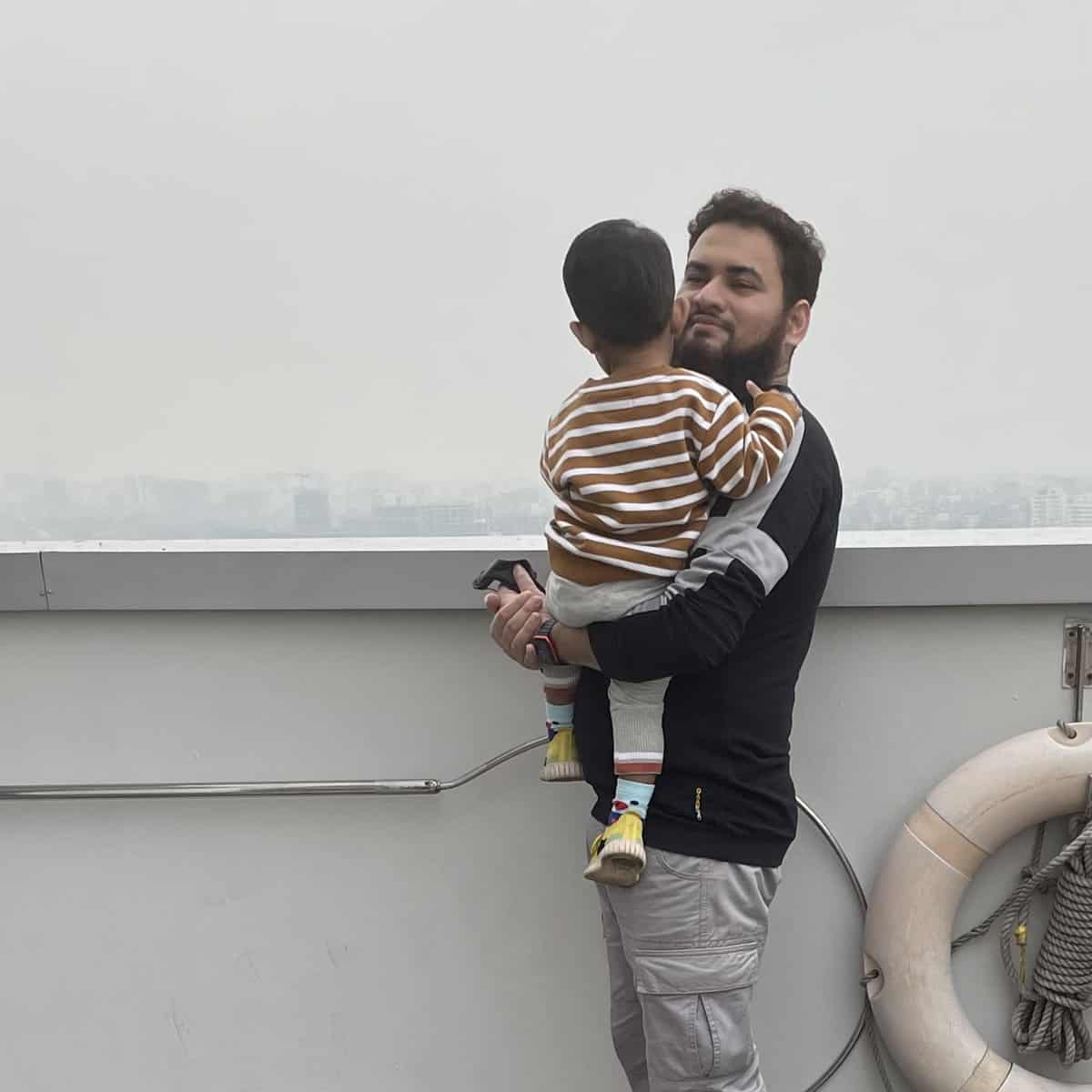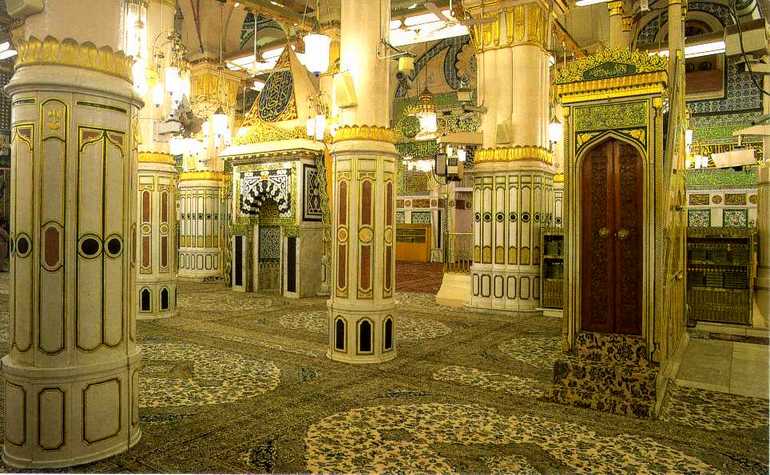
Muslims around the world yearn to connect deeply with the legacy of Islam and pay their respects to their beloved Prophet Muhammad (ﷺ).
Many deeply long to visit the Holy City of Medina and experience the spiritual significance of praying in the Prophet’s Mosque, particularly in the blessed area known as the Rawdah.
But how does one honor the sanctity of this space and ensure their visit is respectful and fulfilling?
Visiting the Rawdah of Prophet Muhammad (ﷺ) is a profound act of devotion. It holds both historical significance and immense spiritual reward.
Understanding the proper etiquette, how to seek forgiveness, and the appropriate prayers like Tahiyyat al-Masjid upon entering will bring profound meaning to your experience.
The Importance of Visiting the Rawdah
The Rawdah, a sacred chamber within the Prophet’s Mosque, holds immense significance for Muslims.
It’s considered a garden of Paradise, a place where prayers are answered and blessings are bestowed. Here’s why visiting the Rawdah is such a profound aspiration for believers:
- Proximity to the Beloved Prophet (ﷺ): The Rawdah contains the Prophet’s tomb, alongside the tombs of his close companions Abu Bakr and Umar ibn al-Khattab. Standing in this space, offering peace and blessings upon the Prophet ﷺ is an act of immense love and respect.
- Fulfilling a Prophetic Promise: The Prophet Muhammad (ﷺ) said, “Whoever visits me after my death is like he who had visited me during my life.” (Tabrani). Muslims believe that visiting the Rawdah and supplicating there is a means of gaining the Prophet’s ﷺ intercession on the Day of Judgement.
- The Hadith of the Garden: “The area between my house and my pulpit is one of the gardens of Paradise.” (Bukhari) – This Hadith further elevates the spiritual status of the Rawdah.
- Scholarly Views: Imam Malik, a renowned Islamic scholar, said, “Visiting the blessed shrine of the Holy Prophet ﷺ is a means of perfection of Hajj” (Fayz-ul-Qadeer).
- A Place of Supplication: Offering your prayers, reciting Salat al-Shukr (prayer of gratitude), or simply spending a few moments in contemplation within the Rawdah is an opportunity to connect with Allah (SWT). Pleading “O Messenger” (yā rasūla llāh), or addressing the Prophet ﷺ with terms like “O Mercy” shows your deep reverence.
- Countless Blessings: Many scholars equate two accepted Hajj to the rewards of visiting the Rawdah. Additionally, supplications made at the Rawdah are believed to be answered, and a visitor receives protection from the terrors of Judgement Day.
Note: It’s essential to remember that while the Prophet’s ﷺ presence is spiritually felt at the Rawdah, we, as Muslims, do not worship him.
Our worship and our prayers are directed solely to Allah (SWT). It is disrespectful to direct funeral prayers toward the Prophet’s tomb. Instead, we direct ourselves toward the Qibla as we glorify Allah and ask for His blessings.
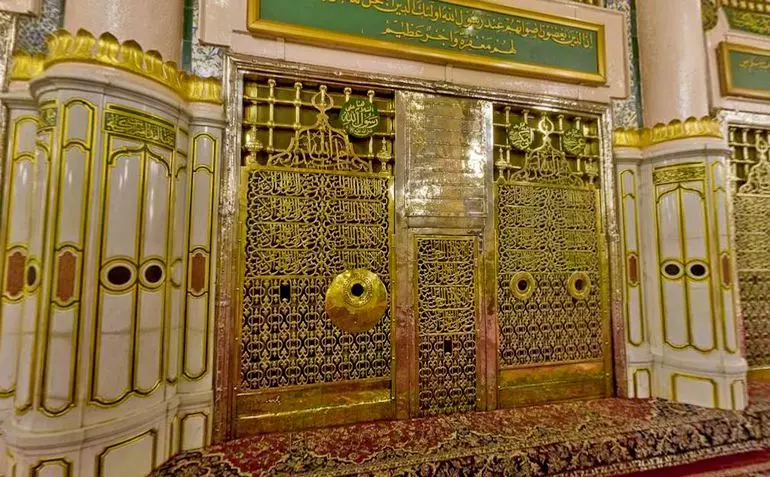
Understanding the Etiquette of the Visit
Visiting the Rawdah, within the sacred precinct of Masjid Nabawi, is a deeply spiritual experience.
To make the most of this blessing and honor the sanctity of the space, it’s vital to understand the recommended etiquette:
- Intention: Before making the journey specially to visit Madinah, set your intention sincerely for Allah (SWT) and to pay respect to the Prophet Muhammad (ﷺ).
- Entering the Mosque: Enter with your right foot and recite a dua upon entry, such as “Bismillah, wassalatu wassalamu ‘ala Rasulillah. Allahumma iftah li abwaba rahmatika.” (In the Name of Allah, and peace and blessings be upon the Messenger of Allah. O Allah, open for me the doors of Your Mercy). Approach Bab al-Salam or Bab Jibril and recite “Peace be upon you, O Messenger of Allah.”
- Respectful Conduct: Maintain a calm and humble demeanor within the mosque, lowering your voice and refraining from crowding or pushing others. Be mindful of those offering prayers around you.
- Attire: Dress modestly and ensure your attire follows Islamic guidelines. Women should be fully covered, including wearing a headscarf.
- Photography: Taking photographs or videos inside the Rawdah Mubarak is strictly prohibited. The sanctity of the space needs to be respected.
- Visiting the Prophet’s Tomb: Approach the enclosure with reverence and recite: “Peace be upon you, O Prophet of Allah, and may God bless you. O Allah, bless Muhammad and the family of Muhammad, as you have blessed Abraham and the family of Abraham.” (allāhumma ṣalli alā muhammad). Offer prayers and supplications, and send blessings upon the Prophet ﷺ and his two companions.
- Gender Segregation: Men and women have separate designated timings to visit the Rawdah. Respect these allocations to maintain order and a peaceful environment.
- Supplication: While there are no prescribed duas, reciting verses of the Qur’an, sending blessings upon the Prophet Muhammad ﷺ (allāhumma ṣalli alā muhammad), and making personal supplications to Allah (SWT) are all appropriate.
Remember: Visiting the Rawdah is not a pillar of Islam like Hajj or Umrah. However, tradition recounts that the Prophet ﷺ sought permission and encouraged visiting his grave site out of respect and affection.
Observing proper etiquette, while a form of respect, is also a way to deepen your own connection with the spiritual significance of this space.
How to Access the Rawdah
Gaining access to the Rawdah Sharif (رياض الجنّة), often described as a garden of Paradise, can be a challenge due to its popularity and great significance. Here’s what you need to know:
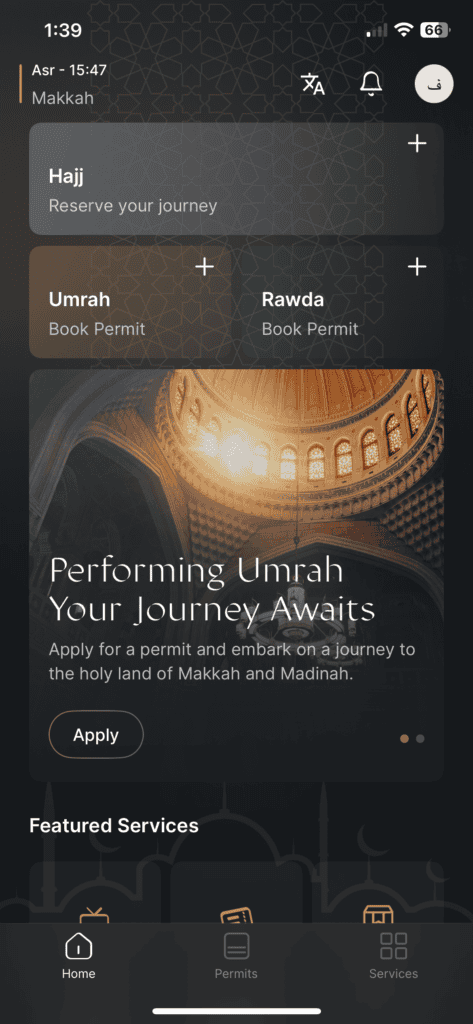
The Nusuk App
- Download & Register: The Saudi Ministry of Hajj and Umrah has streamlined the process with the official Nusuk app. Download it and create an account using your visa details.
- Book Your Permit: Select the “Praying in the Noble Rawdah” service and choose your preferred slot timings. Be prepared for potential wait times, as permits can be limited.
- Check the App Regularly: Keep an eye on the Nusuk app for any available slots that may open up.
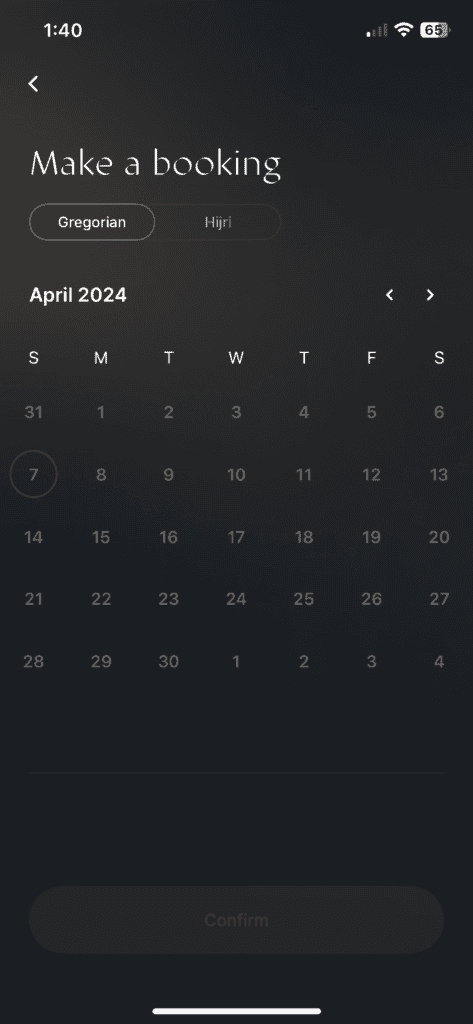
Alternatives for Your Visit to Madinah
- Purpose: If your sole aim is to pray near the Prophet Muhammad’s ﷺ noble face and resting place, consider offering your prayers in other areas of Masjid e Nabawi that are adjacent to the Rawdah area.
- Sunnah of Visiting: The Prophet ﷺ said “Whoever visits me after my death is like he who had visited me during my life.” Visiting Madinah for any other motive but to visit the Prophet ﷺ is not a sunnah practice and holds a bad reckoning according to many scholars.
- Prayer in the Rawdah: While praying within the Rawdah holds great significance, offering prayers in any part of Masjid e Nabawi is immensely rewarding. Don’t overlook the virtue of prayers offered near the pillars (Ustuwanah) like the Ustuwanah al-Tawbah (Pillar of Repentance).
Important Considerations
- Gender Segregation: Women and men have separate designated timings for visiting the Rawdah.
- Beyond Prayer Time: While visiting the Rawdah to pray is a prime motivation, make time to reflect, recite the Qur’an, and send blessings upon the Prophet ﷺ (عَلَيْكَ يَا).
Note: Although the Rawdah holds an elevated status, remember that making supplications (duas) directly to the Prophet ﷺ is not permissible.
All our prayers and pleas for help should be directed solely to Allah (SWT).
The Experience of Visiting the Rawdah
Entering the Prophet’s Mosque: Stepping into Masjid al-Nabawi is an awe-inspiring experience. The intricate details, the grand scale, and the knowledge that you’re walking where the Prophet Muhammad (ﷺ) once walked creates a sense of humble reverence.
Approaching the Rawdah: Navigating through the mosque towards the Rawdah Sharif (رياض الجنّة) requires patience and respect for fellow visitors. The anticipation builds, your heart quickens, knowing that you are approaching one of the most sacred places in Islam.
Inside the Rawdah: Entering the designated area, with its distinctive green carpet and golden accents, feels like stepping into another realm. The air is thick with a sense of profound spirituality, a blend of devotion and hope.
A Moment of Connection: Offering prayers, reciting from the Qur’an, and whispering your supplications creates a deep connection with the Prophet’s ﷺ legacy.
Though you cannot see his tomb, the knowledge of his presence fills you with a mix of awe and tranquility. This connection is a deeply personal experience.
Duas and Reflections: While there are no specific prayers required, this is a time to make sincere pleas to Allah (SWT). Reflect on your life, seek forgiveness, express gratitude, and ask for strength in your faith.
Leaving the Rawdah: As you reluctantly leave the space, a sense of peace and fulfillment washes over you. The experience of visiting the Rawdah stays with you long after, a reminder of the profound blessings and mercy bestowed upon the faithful.
Please note: It’s important to be mindful of others waiting their turn to enter the Rawdah. Though the desire to stay longer is strong, respect the allocation and share this special place with others.
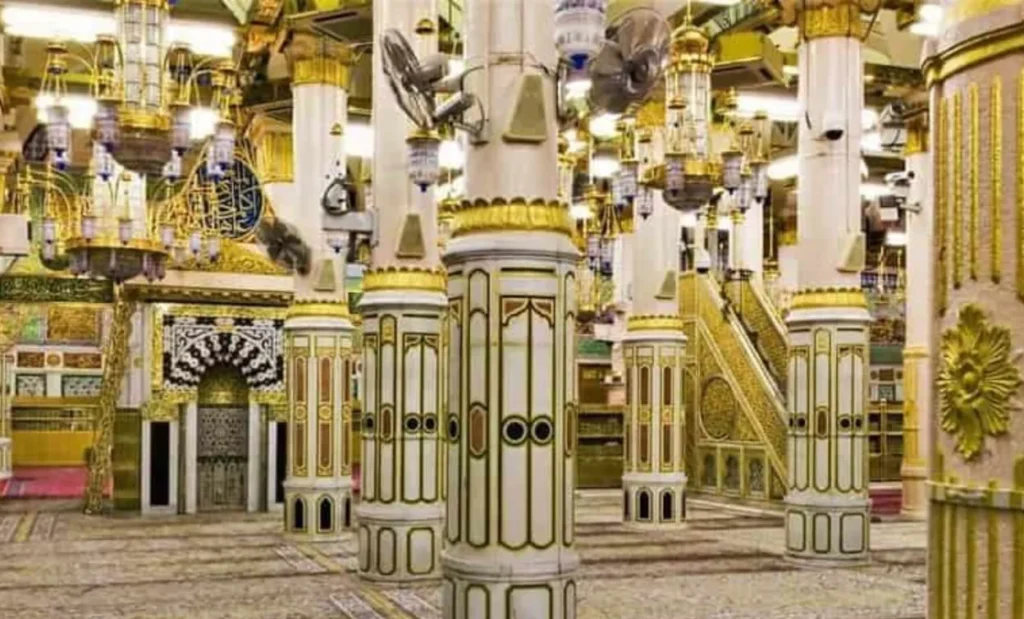
Practical Tips for a Smooth Visit
To ensure the best possible experience while visiting the Rawdah, keep these practical tips in mind:
- Peak Times: The mosque and the Rawdah are busiest during prayer times and after Fajr (dawn prayer). If you prefer a less crowded experience, try visiting during early mornings or later in the evening.
- Hydration and Rest: The journey to and from the Rawdah can be long, especially in warm weather. Stay hydrated and take small breaks when needed to avoid exhaustion.
- Mindfulness: Be considerate of others. Move along within the Rawdah after reciting your prayers so others can also have the opportunity to experience this special place. Respect the space and its visitors.
- Dress Appropriately: Follow the Islamic dress code for both men and women. Ensure your attire is modest and respectful.
- Accessibility: If you have limited mobility or require accommodations, be aware that the mosque and its surroundings can be crowded. Contact the mosque authorities in advance for assistance.
- Beyond the Visit: With your permit to visit the Rawdah, you can usually access other areas within Masjid al-Nabawi. Make time to explore its beautiful architecture, history, and spiritually significant areas.
Note: While visiting the Rawdah (Riyaz ul Jannah) is a profound experience, remember that prayer in any area of the Prophet’s Mosque holds immense blessings.
Beyond the Rawdah: Exploring Medina
Medina offers a wealth of experiences beyond the Prophet’s Mosque and visiting rawdah. Immerse yourself in the city’s rich history and Islamic heritage with these key sites:
- Quba Mosque: The first mosque built in Islam, Quba Mosque holds immense historical significance. Offer prayers here and reflect on the foundation of the Muslim community.
- Masjid al-Qiblatain: Known as the “Mosque of the Two Qiblas” this mosque marks where the direction of prayer (Qibla) was changed from Jerusalem to Mecca.
- Jannat al-Baqi Cemetery: The resting place of many of the Prophet’s (ﷺ) family members and companions, Jannat al-Baqi is a site of profound significance. Pay your respects and reflect on the fleeting nature of life.
- Mount Uhud: The site of a historic battle, Mount Uhud offers breathtaking views and a place to learn about early Islamic history. Pay homage to the martyrs who fell here.
- The Seven Mosques: Take a walking tour and visit the small historical masjids in the vicinity of the Battle of the Trench, each with its own unique story.
Local Experiences in Medina
- Medina Dates: Sample a variety of locally-grown dates in traditional markets – a quintessential experience in Medina.
- Islamic Museums: Explore museums that showcase Islamic art, artifacts, and the rich history of the region.
- Interactions with Locals: Engage respectfully with the people of Medina. Their welcoming nature and knowledge of the city can enrich your visit.
Note: Before planning your itinerary, always check current opening hours and any visitor restrictions that may be in place for the different sites.
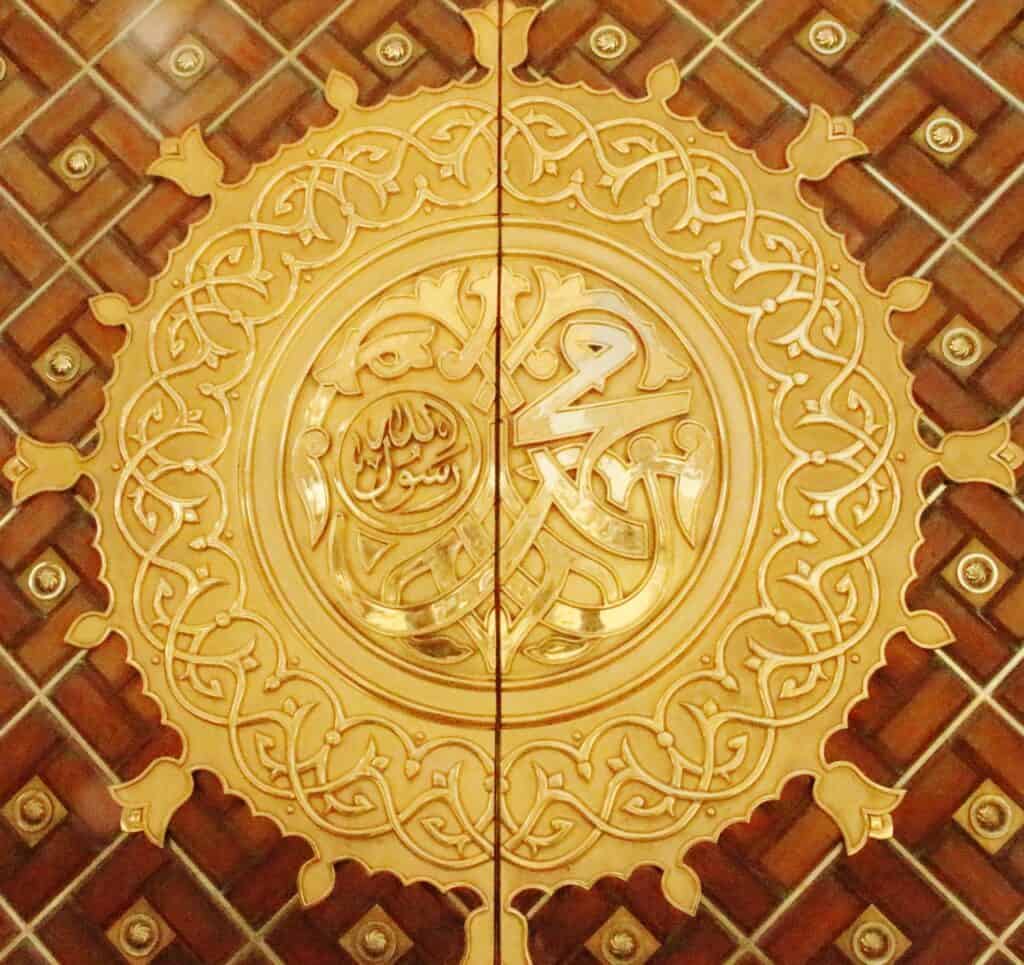
Conclusion
The experience of visiting the Rawdah of the Prophet Muhammad (ﷺ) is a deeply personal one.
Whether your journey to Medina is driven by a lifelong yearning or an unexpected opportunity, it has the potential to be transformative.
The spiritual weight of this place, coupled with the chance to connect with the Prophet’s (ﷺ) legacy, can ignite a renewed sense of faith and strengthen your resolve as a Muslim.
While the Rawdah holds an unparalleled position within the hearts of Muslims, remember that the spirit of the Prophet’s (ﷺ) message is carried throughout Medina.
If you are granted the opportunity to make this pilgrimage, embrace it fully.
Seek knowledge, engage in reflection, and allow the experience to deepen your connection to Allah (SWT) and the beauty of Islam.
May your visit to the Rawdah be filled with blessings, peace, and an enduring sense of spiritual fulfillment.
Frequently Asked Questions
Can women visit the Rawdah?
Yes, women can visit the Rawdah. The mosque designates separate visiting hours for men and women to ensure a comfortable and respectful experience for all.
What should I wear to visit Rawdah?
Both men and women should follow traditional Islamic dress codes for visiting holy sites. This means modest attire covering the body, including a headscarf for women.
Can women visit the Rawdah?
Yes, women can visit the Rawdah. The mosque designates separate visiting hours for men and women to ensure a comfortable and respectful experience for all.
Is photography allowed in the Rawdah?
No, photography and videography are strictly prohibited within the Rawdah. Respect the sanctity of the space and refrain from using your camera or phone.
Do I need a special permit to visit the Rawdah?
Yes, currently a permit is required through the official Nusuk app. Permits are released in advance and are often in high demand.
What is the difference between visiting the Rawdah and performing Hajj/Umrah?
Visiting the Rawdah is a highly recommended act of devotion, but it is not a substitute for the obligatory pilgrimage of Hajj or the lesser pilgrimage of Umrah.

